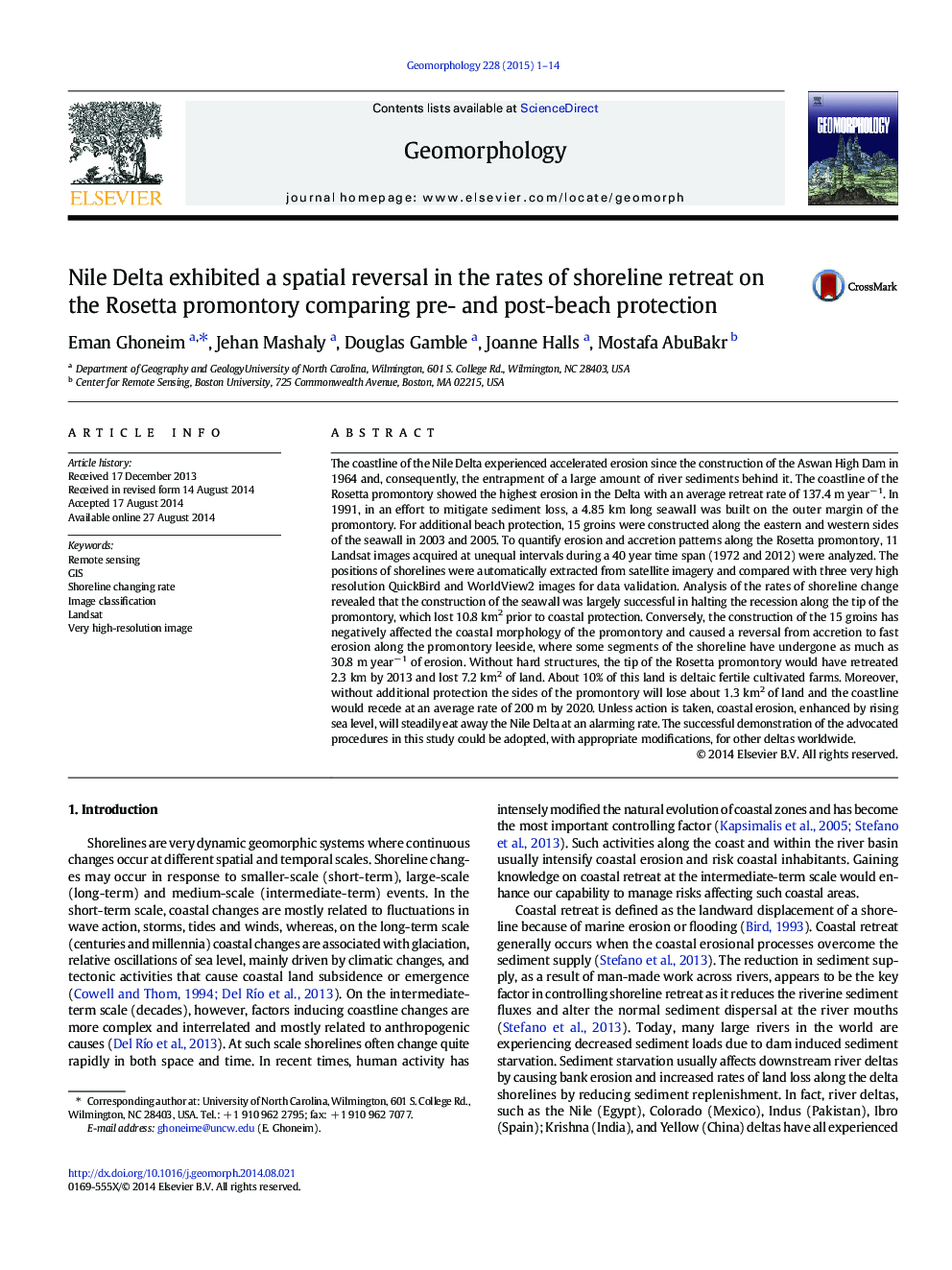| کد مقاله | کد نشریه | سال انتشار | مقاله انگلیسی | نسخه تمام متن |
|---|---|---|---|---|
| 6432231 | 1635421 | 2015 | 14 صفحه PDF | دانلود رایگان |
- The Rosetta promontory exhibited a spatial reversal in the rates of coastal retreat.
- The construction of the seawalls was successful in halting coastal recession.
- Without hard structures, the Rosetta promontory would have retreated 2.3 km by 2013.
- Without further protection the promontory sides will lose 1.3 km2 of land by 2020.
The coastline of the Nile Delta experienced accelerated erosion since the construction of the Aswan High Dam in 1964 and, consequently, the entrapment of a large amount of river sediments behind it. The coastline of the Rosetta promontory showed the highest erosion in the Delta with an average retreat rate of 137.4 m yearâ 1. In 1991, in an effort to mitigate sediment loss, a 4.85 km long seawall was built on the outer margin of the promontory. For additional beach protection, 15 groins were constructed along the eastern and western sides of the seawall in 2003 and 2005. To quantify erosion and accretion patterns along the Rosetta promontory, 11 Landsat images acquired at unequal intervals during a 40 year time span (1972 and 2012) were analyzed. The positions of shorelines were automatically extracted from satellite imagery and compared with three very high resolution QuickBird and WorldView2 images for data validation. Analysis of the rates of shoreline change revealed that the construction of the seawall was largely successful in halting the recession along the tip of the promontory, which lost 10.8 km2 prior to coastal protection. Conversely, the construction of the 15 groins has negatively affected the coastal morphology of the promontory and caused a reversal from accretion to fast erosion along the promontory leeside, where some segments of the shoreline have undergone as much as 30.8 m yearâ 1 of erosion. Without hard structures, the tip of the Rosetta promontory would have retreated 2.3 km by 2013 and lost 7.2 km2 of land. About 10% of this land is deltaic fertile cultivated farms. Moreover, without additional protection the sides of the promontory will lose about 1.3 km2 of land and the coastline would recede at an average rate of 200 m by 2020. Unless action is taken, coastal erosion, enhanced by rising sea level, will steadily eat away the Nile Delta at an alarming rate. The successful demonstration of the advocated procedures in this study could be adopted, with appropriate modifications, for other deltas worldwide.
Journal: Geomorphology - Volume 228, 1 January 2015, Pages 1-14
